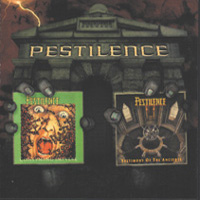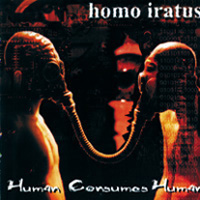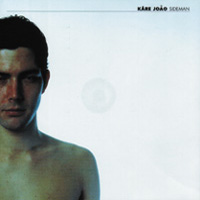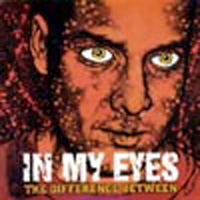 Pestilence
Pestilence
Consuming Impulse/Testimony of the Ancients (Roadrunner)
by Tim Den
As part of the early-’90s jazz/death movement, Pestilence left behind four albums of pure progressive mindfuck that easily shames anything “technical” today. It’s not nostalgia talking when I say that Pestilence remain one of the most underrated metal bands in history: It’s simply the truth. Like The Beatles of their genre, Pestilence never repeated themselves. Sure, debut Malleus Maleficarum (’88) got the band started on the hyper-thrash death path that so many of their ilk launched from, but by the time new guitarist Patrick Uterwijk replaced Randy Meinhard for Consuming Impulse (’89), the band was on their way toward the future.
Retaining death metal’s ferocity and fury, Consuming Impulse nontheless showed – for the first time – the band’s fondness for tricky tempos and puzzling riff assemblage. Whereas contemporaries either grinded or power-chorded through avalanches of noise, Consuming Impulse was filled with strange single-string slides, harmonies, and note jumping. The result was a most unusual heavy album: Moody yet savage, challenging yet satisfyingly digestable, original yet familiar enough to bang heads to. Led by bassist/vocalist Martin Van Drunen’s acidic, tortured howls, Consuming Impulse made the band instant stars in the underground. Purists still stand by it as the band’s brightest moment.
However, it’s with follow-up, Testimony of the Ancients (’91), that Pestilence struck worldwide attention. This was especially ironic, since the band had been expected to implode after Drunen left unceremoniously in ’90. Guitarist/band leader Patrick Mameli took over vocals and drummer Marco Foddis took over all the lyric-writing, signaling a huge change in the band that most thought would never work. Well, Testimony of the Ancients silenced all critics. Taking their jazz influences even further (and augmented by a super dry production, courtesy of Scott Burns), the album sharpened all the edges and delivered brain-warping wrecks of punctuality, mythical melodies, instrumental intermissions, and elaborate riffs. With guest bassist (and then-Cynic member) Tony Choy helping to expand the horizons, Testimony of the Ancients played like mercury slipping out of your hands: Always defying expectations. The “single string” approach to riffing was now in full bloom, somehow filling the spectrum of heaviness with just single notes played in mid-tempo processions. How!? How were the band able to create such devastating death metal without leaning on thick power chords? How were they able to invoke hysterical moshpits without resorting to numbing grooves or predictable beats? Easy: Pestilence were one of a kind. Their uniqueness was their secret, an uniqueness unparalleled then and now.
And though this two-in-one reissue only includes the band’s most successful albums, it must be stated that the band’s swansong Spheres (’93) demands to be noted and respected. With full-time bassist Jeroen Paul Thesseling integrated, Pestilence took to the horizon with Spheres, boldly surpassing every cliché into limitless creativity. Guitar synths melded with vocal effects, jazz chords rode upon clean tones (NO distortion! Gasp!), and a beautifully cybernetic death metal album was born… and ignored. Spheres was hated by both the label and the fans, shunned for its futuristic beauty and awkward anatomy when it should’ve been recognized as the Final Fantasy of death metal. Imaginative and still as heavy in intention (though obviously less balls-out than its predecessors), Spheres still sounds as fresh and innovative today as it did over 10 years ago. So how ’bout it, Roadrunner? Malleus Malificarum/Spheres? You know a band this breath-taking deserves to have all of their works raised from the tombs of obscurity!
(902 Broadway New York, NY 10010)



